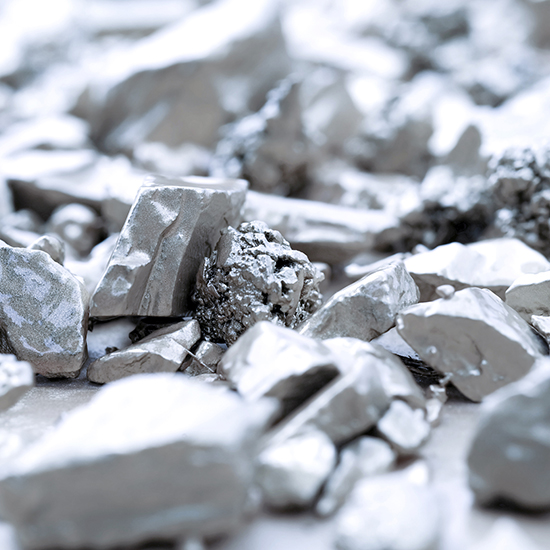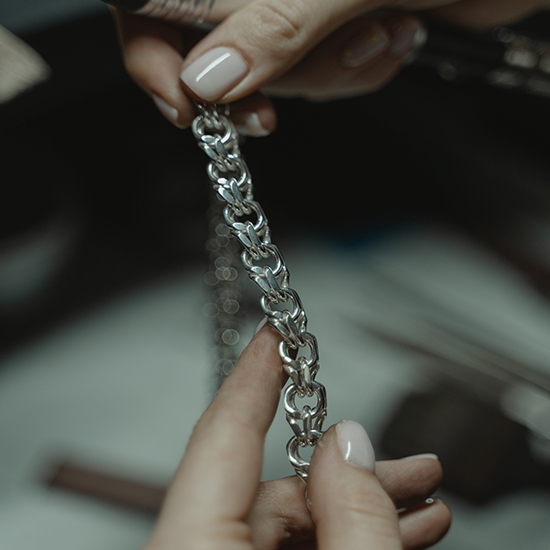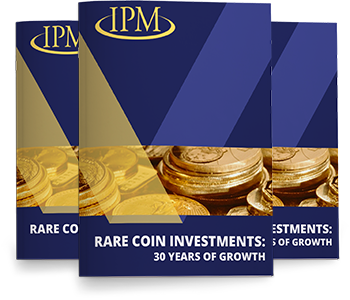Market Watch
Latest Precious Metal News

Understanding Silver and Its Properties
Are you curious about how to determine if your silver items are genuine? This comprehensive guide will provide you with the insights and techniques needed to identify real silver. Whether you're a collector, an enthusiast, or just curious, understanding the authenticity of silver can be both fascinating and practical.
Silver, a precious metal used for centuries in jewelry, coins, and decorative objects, has a high value, making it a target for imitations and fakes. Recognizing real silver is vital to avoid scams. Unlike other metals, genuine silver is generally less shiny and has a colder tone. It's also not magnetic and is an excellent conductor of heat, which are key properties that can be used in testing.
Common Methods for Testing Silver at Home
- The Magnet Test: Simple yet effective, this test uses a magnet to check for magnetic response. Pure silver is not magnetic, so if the item is attracted to the magnet, it is likely not real silver.
- The Ice Test: Due to its high thermal conductivity, placing an ice cube on a silver item should result in quick melting. Slow melting or no melting indicates the item may not be pure silver.
- The Nitric Acid Test: This more complex test involves applying nitric acid to a discreet part of the item. A creamy white reaction suggests pure or sterling silver, while a green reaction indicates a base metal with silver plating.
- Hallmark Test: Look for hallmarks that indicate silver purity, such as "925" for sterling silver. However, be cautious as some fakes may also have fake hallmarks.

Distinguishing Between Silver and Silver-Plated Items
Genuine silver items often bear hallmarks indicating their purity, such as "925" for 92.5% pure silver. In contrast, silver-plated items may have marks like "EPNS" (Electroplated Nickel Silver). Additionally, silver-plated items may show signs of flaking or turning green, indicating a base metal beneath a silver coating.
Recent Advances in Professional Silver Testing
Professional methods for testing silver authenticity have evolved, integrating technological advancements for more accurate results. These methods include:
- Metallurgical Analysis: Used by professionals, this method determines the metal composition of an item. A detailed analysis can reveal the exact percentage of silver present and identify any other metals used in the alloy.
- Counterfeit Detection in Design Deviations: Experts look for deviations in design details, such as less detail in leaves or stars, cartoonish elements, and striations linked to counterfeit die production.
- Security Features: Professional appraisers also examine security features like notches and reeds on coins for authenticity verification.
Signs of Fake Silver
Identifying fake silver is crucial in avoiding scams. Here are some common signs:
- Weight Discrepancies: Real silver has specific weight characteristics. Any significant deviation can be a red flag.
- Magnetism: Silver is not magnetic. If an item is attracted to a magnet, it's a sign that it might not be real silver.
- Visual Inspection: Look for areas where the silver appears to be flaking or turning green, indicating silver plating over a base metal.
- Sound Test: Real silver has a distinct ringing sound when struck. Counterfeit silver may produce a duller sound.
- Design Inconsistencies: Pay attention to the design details. Poor imitations often have less detail, cartoonish elements, or incorrect patterns and textures.

Professional Silver Testing Methods
Professionals use a range of methods to authenticate silver:
- X-Ray Fluorescence (XRF) Testing: This non-destructive method determines the metal's composition by measuring the fluorescent X-ray emitted from the material when it's struck by a high-energy X-ray or gamma ray.
- Ultrasound Testing: This method measures the thickness and tests the purity of silver items. It's particularly useful for detecting internal impurities or inconsistencies.
- Metallurgical Analysis: As previously mentioned, this involves a comprehensive analysis of the metal's composition, which is particularly useful for detailed authenticity verification.
Legal Aspects and Regulations in Silver Trade
Understanding legal aspects and regulations is crucial for anyone dealing in silver:
- Hallmarking Laws: Many countries have laws requiring silver items to be hallmarked, indicating their purity. These laws help protect consumers from fraud.
- Trade Regulations: International trade regulations may apply to silver, especially in large quantities or high-value transactions. These regulations help prevent illegal trading and ensure the authenticity of silver on the market.
- Consumer Rights: Consumers have the right to accurate information about the purity and origin of silver items. Understanding these rights can help in making informed purchases and avoiding scams.
Practical Advice for Consumers and Businesses
For consumers and businesses alike, understanding how to verify the authenticity of silver is essential. Here's some practical advice:
- Research and Education: Stay informed about the properties of real silver and common signs of fakes. Knowledge is your first line of defense.
- Buy from Reputable Sources: Whether you're a consumer or a business, purchasing silver from reputable dealers can significantly reduce the risk of encountering counterfeit items.
- Use Simple Tests at Home: Employ tests like the magnet test, the ice test, and visual inspection as preliminary checks for silver authenticity.
- Seek Professional Verification: For high-value transactions or in cases of doubt, seek professional verification. Professional appraisers have the tools and expertise to accurately determine the authenticity of silver items.
- Understand Hallmarks and Stamps: Learn to recognize and understand hallmarks and stamps that indicate silver purity. Be aware, however, that some counterfeit items may feature fake hallmarks.
For businesses, especially those in the silver trade, maintaining a reputation for integrity and quality is crucial. Implementing stringent quality control measures and educating staff and customers about silver authenticity can help build trust and credibility in the market.
Future Outlook of Silver Testing Technologies
As technology advances, we can expect more sophisticated and accessible methods for testing silver. Here are some potential future developments:
- Advanced Spectrometry Techniques: Technologies like XRF are likely to become more refined, offering even more precise measurements.
- Portable Testing Devices: The development of portable, user-friendly devices for silver testing could revolutionize the way consumers and small businesses verify silver authenticity.
- Integration of Blockchain Technology: Blockchain could be used to track and verify the authenticity and origin of silver items, adding an additional layer of security against counterfeits.
The Economic Impact of Fake Silver
Fake Silver: More Than Just a Deception
The prevalence of fake silver in the market has significant economic implications, affecting both consumers and the silver industry. Understanding this impact is crucial for those involved in buying, selling, or collecting silver items.
Consumer Losses: The Immediate Impact
The most direct effect of counterfeit silver is on consumers. Purchasing fake silver results in financial loss, particularly for those investing in what they believe to be genuine silver items. The value of fake silver is drastically lower than real silver, leading to a direct monetary loss for unsuspecting buyers.
Market Confidence: A Ripple Effect
The circulation of fake silver can erode confidence in the silver market. As more counterfeit items flood the market, consumer trust diminishes. This loss of confidence can lead to decreased demand for silver items, impacting legitimate sellers and artisans who depend on the integrity of the market.
Price Volatility: An Economic Consequence
The presence of counterfeit silver can contribute to price volatility in the silver market. Uncertainty about authenticity can lead to fluctuations in silver prices, affecting investors and the broader financial markets that track precious metals.
Impact on Artisans and Manufacturers
Artisans and manufacturers of genuine silver products also suffer. The influx of cheaper, counterfeit silver items creates unfair competition, potentially driving down prices and profits for those producing authentic silver goods. This not only affects their livelihoods but can also lead to a decline in the quality and craftsmanship of silver items in the market.
Legal and Regulatory Costs
Combating counterfeit silver incurs significant legal and regulatory costs. Governments and industry bodies must invest in measures to detect and prevent the sale of fake silver, from enforcement actions to consumer education. These efforts, while necessary, require substantial resources.
A Call for Vigilance
The economic impact of fake silver underscores the importance of vigilance in the silver market. From individual consumers to industry stakeholders, awareness and proactive measures are key to mitigating the effects of counterfeit silver. This not only protects investments but also preserves the integrity and trust in the silver market.
Conclusion
In conclusion, understanding how to tell if silver is real is crucial in a market flooded with imitations and fakes. From simple at-home tests to professional analysis methods, there are various ways to verify silver authenticity. Legal aspects and regulations play a significant role in ensuring the purity and legitimacy of silver items. Consumers and businesses alike should stay informed and cautious, especially when dealing with high-value items. As technology progresses, the future of silver testing looks promising, with advancements that could make authenticity verification more accessible and accurate.
By understanding these methods, you're now equipped to determine the authenticity of silver. Remember, each test has its limitations, and sometimes a combination of methods is best. Whether for personal satisfaction or investment purposes, knowing how to tell if silver is real is a valuable skill.
Key Takeaways:
- Understanding Silver Properties: Real silver is not magnetic, has high thermal conductivity, and specific visual characteristics.
- Home Testing Methods: Use tests like the magnet test, ice test, nitric acid test, and visual inspection to check for silver authenticity at home.
- Professional Testing Techniques: Techniques like XRF, ultrasound testing, and metallurgical analysis provide accurate authenticity verification.
- Legal Aspects: Hallmarking laws and trade regulations are crucial for ensuring the authenticity and legal trading of silver.
- Consumer and Business Strategies: Purchasing from reputable sources and seeking professional verification when necessary are key strategies for both consumers and businesses.
- Future of Silver Testing: Advancements in spectrometry and portable testing devices, along with the potential use of blockchain technology, represent the future of silver testing.
To learn more about silver check out other great articles at IPM including Sterling Silver Price, The Most Valuable US Coins In Circulation, and Everything You Need To Know About The 1776 Continental Dollar.
FAQs
How can I quickly test if my silver is real at home?
You can perform simple tests such as the magnet test (silver is not magnetic), the ice test (silver's high thermal conductivity will melt ice quickly), and the nitric acid test (real silver turns creamy white).
What are the signs of fake silver?
Fake silver may show magnetic attraction, lack of detail in design, discoloration, flaking, and a different sound when struck compared to real silver.
How do professionals determine if silver is genuine?
Professionals use methods like X-Ray Fluorescence (XRF) testing, ultrasound testing, and metallurgical analysis to accurately assess silver's authenticity.
What do hallmarks on silver mean?
Hallmarks indicate the purity of silver. For example, "925" means the item is made of 92.5% silver. However, some counterfeit items may feature fake hallmarks.
What should I do if I suspect my silver is fake?
If you suspect your silver is fake, it's advisable to have it professionally appraised. A reputable jeweler or appraiser can provide an accurate assessment.

